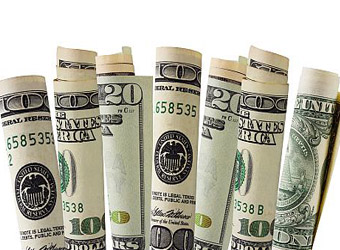The dollar edged lower in choppy trading on Friday as investors found few reasons to make big bets on the U.S. currency following newly sworn-in President Donald Trump’s inauguration speech.
The dollar index, which tracks the greenback against six major currencies, briefly fell to session lows during Trump’s remarks in which he pledged to put “America first,” reigniting some worries of protectionist policies.
But the decline was modest as Trump did not touch on specific economic or trade policies.
“There wasn’t anything that appeared to elicit a strong market movement,” said Richard Scalone, co-head of foreign exchange at TJM Brokerage in Chicago.
“Overall, we’re seeing the U.S. dollar consolidating some of the recent gains and it’s similar to … consolidation we saw in the early part of last year following the Fed’s 2015 rate hike.” Scalone also said.
The Federal Reserve raised U.S. overnight interest rates in December for the first time in 2016. Its rate hike in December 2015 was the first in close to a decade.
The dollar fell against the euro, Japanese yen and British pound after posting some modest gains earlier on Friday.
It rose against the Australian, New Zealand and Canadian dollars, as well as currencies of most other major commodity producers.
Market uncertainty kept the dollar in a tight range after a volatile week that underlined growing uncertainty over how Trump would govern.
“Did he give us anything we didn’t already know? No,” said Richard Franulovich, senior currency strategist at Westpac Banking Corporation. “But I was struck by the very combative, muscular tone to his speech.”
The dollar index fell 0.37 percent. It has risen about 3.5 percent since Trump’s Nov. 8 election victory, but has shed more than 1 percent so far in January on growing concerns about Trump’s protectionist rhetoric and recent comments about his dissatisfaction with the strong dollar.
The Mexican peso briefly trimmed early gains during Trump’s speech, but strengthened again after the president did not detail measures that could specifically affect Mexico.
The peso was up 1.57 percent against the dollar.
Source: Reuters



